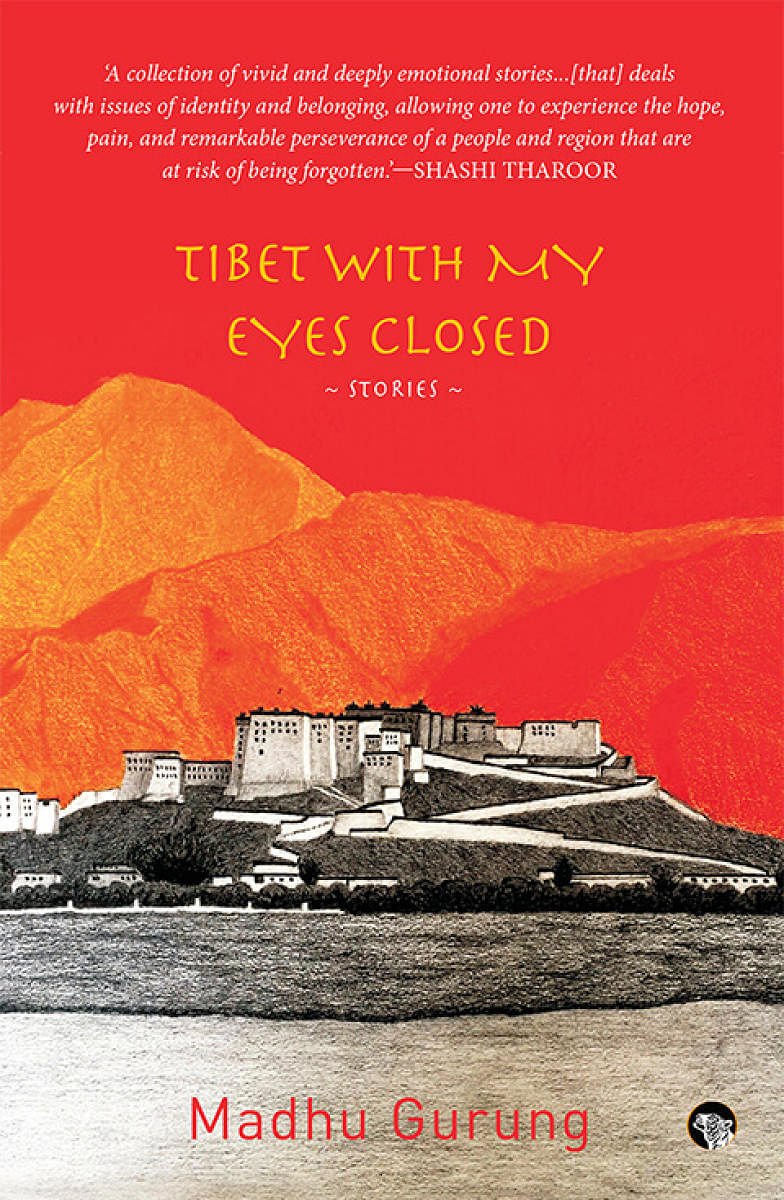
Tibet With My Eyes Closed is about many lives poised on the thinning memory of a lost homeland. A collection of 11 short stories by Madhu Gurung follows a trail of refugees who were always tethered to the small nation they were forced to flee.
Hence, the book is a series of accounts set in the real world, but powered by emotion with a touch of mysticism.
The tales are mapped out in diverse locations, through the mountains of India, Nepal, China and Tibet, tracking the evolution of Tibetans who became escapees after 1957. Their backdrop forms a canvas on which the author lays out the broad timeline for their journeys, providing the background for different memories dotting the place and time.
Madhu Gurung explains that she has mapped the stories on the colours as well as the core elements and symbols of the Tibetan flag. But the author goes through ordinary events — births, deaths, marriages and childbirths.
Each tale is a thumbnail impression of a refugee’s life, yet, some of them are arresting because they are set in extraordinary spools of time, amidst unique dilemmas. Every character symbolises the evolution of the escapee, with his or her baggage of emotions, fears, aspirations and actions. Hence, while they emigrate and struggle, they also convey their most emotional moods — those that make them weep, remember and sigh, their identity seemingly pinned on their ‘refugee’ status. While each is different from the other, they are all characterised by the single-minded pursuit of land, the physical manifestation of their identity.
Beginning with ‘Blue’ that signifies birth, the action is actually about one Tibetan’s uprooting from his homeland. Called ‘Zinda’, it travels with a refugee’s childhood and escape, as well as his attempt to return to his old home, in order to bring back his mother. The ‘happy’ ending follows a heartbreaking life of that shadowy character fleeing and returning. ‘Mariko’ is a glimpse into the life, thoughts and feelings of a transgender who lives in an alternative universe.
The twice-removed Tibetans in exile comprise first-generation escapees with fresh wounds. Their offsprings are second-generation children who are wondering, reflecting, and trying to grasp and pass on the baton from their parents to the next generation. With time, some become warring groups — the Chushi Gangdruk — who fought the battles of their new Indian homeland, from 1960 to 1974, through a resistance movement. The stories slowly meander into a newer, globalised and more ordinary world that today’s reader can connect with.
Finally, the collection ends with the story of ‘Amala’, a mother who struggles through life to see her children set up their lives. Her words symbolise what the immigrants carry as the flagbearers: “…the importance of perseverance and faith and remaining human amidst tragedy.”
One of its important characters is a writer who moves from her mother’s home to the US and who is remotely situated from her home, yet has an emotional connect that endures. Her movement is a closure of sorts, as she traces her emigration to the US and her mother returns home. The final destination is a journey inwards, to understand and grasp her inner roots.
While the plots of the takes stand out, the prose is straightforward, staccato and rather staid, almost like a documentary. Still, the narration, though simple, does seem evocative. For instance: “It was a perfect April day, almost a year since he had left home. The taxi stopped by a small, white home, with a golden cloth fluttering at the doorway. He opened the gate, ushering her into the cemented courtyard. The click of the gate started a chain reaction…”
The rather stoic descriptions also bring out bright, colourful characters who move through the narratives with strength and emotion.
It is not the descriptions, but the conversations that make them spring to life and get the readers to experience not only their queries, relationships and reactions, but also their internal soul-searching.
Hence, while the narratives are simple and free-flowing, they are not stream-of-consciousness searches. They are plotted and crafted to make readers skirt on the waves of both worlds. The overall structure and meandering tales make the reader feel the rawness of emotion during the initial flight, as well as the sense of loss and nostalgia at the end.